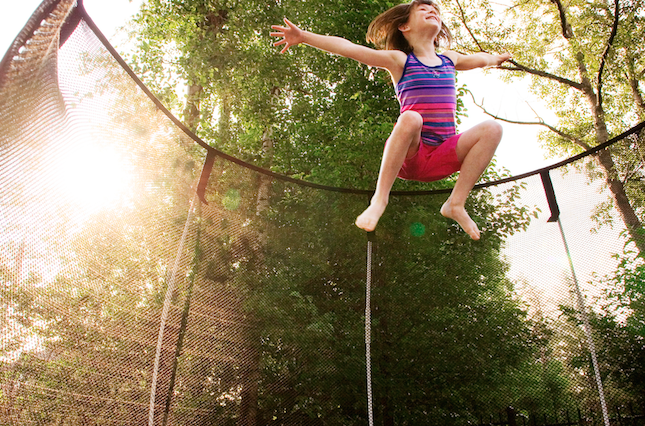Trampolines are a lot of fun, and great for you too – just 10 minutes on a trampoline provides the same aerobic benefit as half an hour of running! But they can also be incredibly dangerous. Here’s our top tips for trampoline safety.
Trampoline injuries – A growing trend
In the media recently there has been a growing number of reports on the number of trampoline related injuries that are occurring throughout the world.
New Zealand figures received from ACC show that 7,644 people injured themselves on a trampoline in 2013. This was an increase by 10% from 2010.
That is almost 150 kiwi kids that are visiting emergency departments or doctors’ offices each week. The studies also showed that 81 percent of these recorded injuries were caused by children falling on to the frame or off the trampoline completely resulting in fractures.
Almost all of these injuries are avoidable.
In the US almost a quarter of a million children receive medical treatment for trampoline injuries every year, with approximately 100,000 being hospital admissions!
Trampoline safety standards in New Zealand
Many of the new models of trampolines that are in the market today have safety nets, covered springs and extra padding, therefore it is easy to believe that these models are significantly safer than they were for previous generations.
With the new injury reports it is clear that the opposite is true and that possibly these ‘safety features’ are offering a false sense of security for parents and children.
This is largely caused by the safety nets that do not have adequate UV protection resulting in the nets tearing easily with children falling through, also the pads are degrading rapidly in sunlight and rarely offering any protection within 6-12 months.
Currently New Zealand does not have any mandatory safety standards and the volunteer standard that has been in place since 2003 is being ignored by importers of cheap products because there are currently no implications to the importer or the manufacturer.
The most recent Trampoline Safety survey undertaken by Consumer Magazine revealed that only one trampoline brand in New Zealand passed the safety standard.
There are no mandatory minimum safety standards to protect consumers in New Zealand, so injuries caused by dangerous trampolines are very much a case of ‘buyer beware’.
You can reduce the risks however. Below are 10 tips for enjoying trampolining without the injuries.
Top 10 Tips for Trampoline Safety
1. One at a time – Multiple jumpers increase the risk of injury from collision. Statistics show that with more than one simultaneous user, the smaller/lighter of the two is almost always the one sustaining an injury. If you do allow more than one jumper at a time Jumpflex recommend ensuring your trampoline is large enough to bounce safely.
2. Don’t flip out – Untrained jumpers run the risk of landing awkwardly. Join a trampoline club to learn the correct skills if you want to try the tricky stuff!
3. Avoid roughhousing – Kids love to rough and tumble, but using a trampoline as a ‘fight mat’ is likely to result in injury.
4. Let Fido watch from the ground – While the family pet may love to have a turn, this can cause collisions and damage to the trampoline.
5. Keep it clean– Trampolines should be void of foreign objects. Any new object introduced to the trampoline is another potential cause of injury.
6. Stand watch – Keep an eye on children and inexperienced jumpers while they are on the trampoline.
7. Steer clear – Do not allow children or pets underneath the trampoline while someone is jumping.
8. Stay in control – Stay in the centre of the trampoline when you’re jumping, and take it easy when entering and exiting the trampoline too.
9. Talk it out – Discuss the importance of trampoline safety with your kids, and tell them about the risks of not using it properly.
10. Research your trampoline purchase thoroughly – If you’re choosing a trampoline with springs ensure the pads are up to the job (many pads appear sufficient, but even at the recommend safety standard the risks are significant – see the below link). A high quality safety net is an important safety feature.
And for more expert advice on safety in and around the home, check out our Grown ups: Family safety section.






